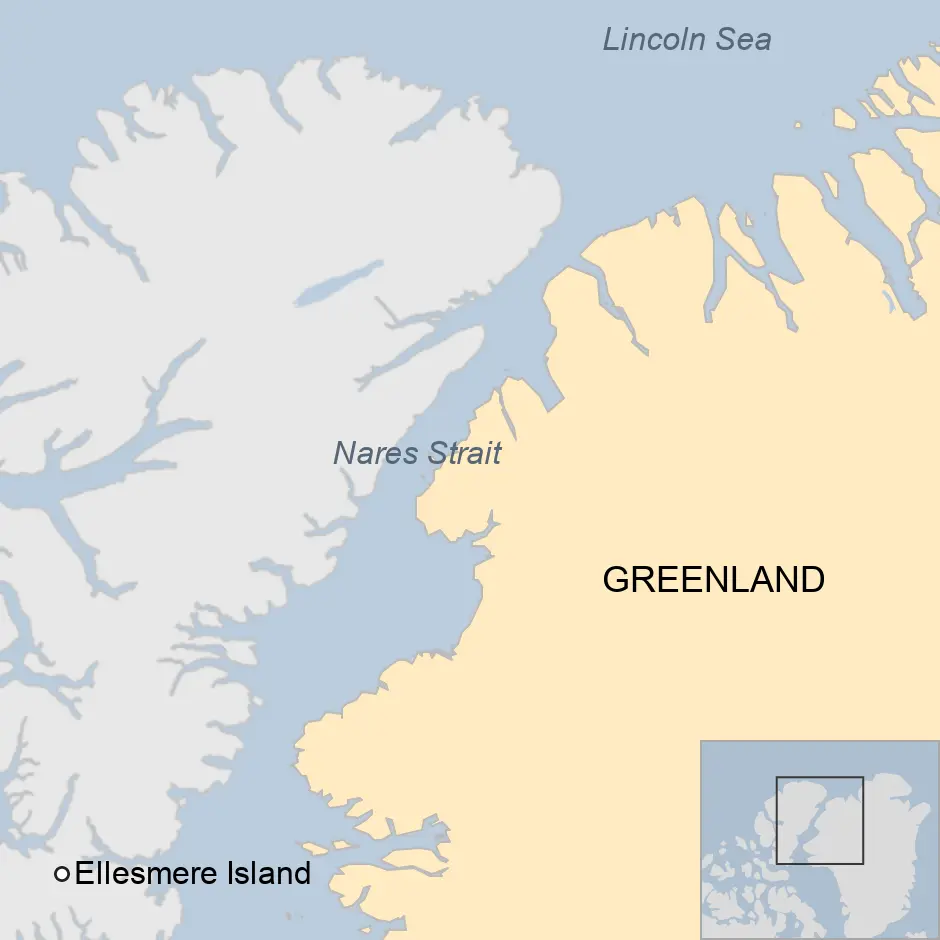Video (Copernicus Data: Sentinel Hub) – video of the ice arch in the Nares Strait breaking.
In recent field tests, we’ve been exploring the feasibility of preserving Arctic sea ice by pumping water onto existing sea ice. Thicker ice is more structurally resilient and better able to survive the increasingly warm summer months. This extra duration enables more solar energy to be reflected back into space – energy that would otherwise be absorbed by the dark ocean, accelerating global warming. However, a sizeable portion of Arctic sea ice is exported out of the region by wind and currents, and melt when encountering warmer water. The question is whether we can preserve this sea ice by limiting ice export.
What is sea-ice export and why should it concern us?
The majority of sea-ice exported from the Arctic ends up in the North Atlantic, moved via the Fram Strait (the region between Greenland and Svalbard). As global warming thins and smooths the ice, it moves faster than before, since it is lighter and no longer held back by underwater ridges that once acted as natural brakes. Today, nearly 10% of the Arctic winter sea ice is flowing out of the region through the Fram Strait.
This loss is concerning for three reasons:
- Accelerated melting: Ice drifting into warmer water melts faster, reducing overall sea ice volume.
- Reduced Albedo: Melted ice exposes darker ocean water, which absorbs more sunlight, further intensifying global warming.
- Disrupted Ocean Circulation: The influx of freshwater from melting ice alters the oceans circulation patterns, impacting weather patterns, climate systems and fragile ecosystems.
Can we slow down sea-ice export?
Although preventing ice export in the Fram Strait is difficult, there are other, narrower, Straits, where interventions that reinforce natural processes may be feasible. One such location is the Nares Strait, located between Ellesmere Island (Nunavut, Canada) and Greenland.

Photo (the BBC): This strait is about 35km wide and 600m deep at its narrowest point.
Every winter, this strait naturally clogs with ice, forming an enormous horizontal ice arch that blocks southward ice export. Behind this arch, an open-water oasis known as a polynya, emerges. This particular polynya, called the NOW Polynya, or Pikialasorsuaq (‘The Great Upwelling’ in the local Inuit language), remains ice-free through winter due to persistent southward winds and becomes a vibrant hotspot for biodiversity. Significant local efforts are underway to protect its health including the work of the Pikialasorsuaq Commission, which integrates Inuit knowledge and strategies to safeguard and monitor this vital ecosystem.
However, climate change has destabilized the Nares Strait ice arch. Over the last 40 years, its average lifetime has shortened from 177 days per year to 128. By June, the thinning ice arch typically collapses flushing vast quantities, about 100,000km2, through the channel and out of the Arctic. Much of this ice is valuable, thick, multiyear ice.
“But, if we reinforce the ice arch to last longer, we could prevent a significant portion of sea ice export and help protect the NOW Polynya’s thriving ecosystem” says Fonger Ypma, founder of Arctic Reflections, who developed the idea.
Small intervention, big rewards
So, as part of our mission to preserve Arctic sea ice, we are also exploring ways to reinforce ice arches by pumping or spraying water. These arches already act as natural barriers against ice export, and bolstering them could have a significant impact on keeping the sea ice in the Arctic. We’re working with scientists from Nansen Centre (NERSC), University College London, Manchester University and Tanuki on this project, as part of a broader consortium led by Cambridge University, funded by the UK organization ARIA (Advanced Research & Innovation Agency).
“We are very happy to collaborate with Arctic Reflections on this important project. The funding from ARIA allows us to conduct much-needed research into the feasibility, effectiveness and potential impact of strengthening ice arches within the Arctic,” says Dr Geoff Evatt, Senior Lecturer at Manchester University.
Our research combines:
- Community consultation with local indigenous communities in the Baffin Bay area,
- Large-scale modeling of Arctic basin sea ice extent and the effect of blocking straits,
- Small scale modeling of the structural and mechanical properties of ice arches,
- Field experiments to test the methods of strengthening natural ice arches in a small setting,
- Investigating potential environmental impacts of ice arch strengthening
- The net effect upon Arctic albedo
Fonger explains that,”This approach represents a relatively localised climate intervention with the potential for large benefits: slowing ice loss, supporting Arctic communities, protecting biodiversity by supporting local conservation efforts, and contributing to global cooling. We are committed to exploring several ways to preserve Arctic sea ice, not just by thickening it, but also by keeping it in the Arctic.”
